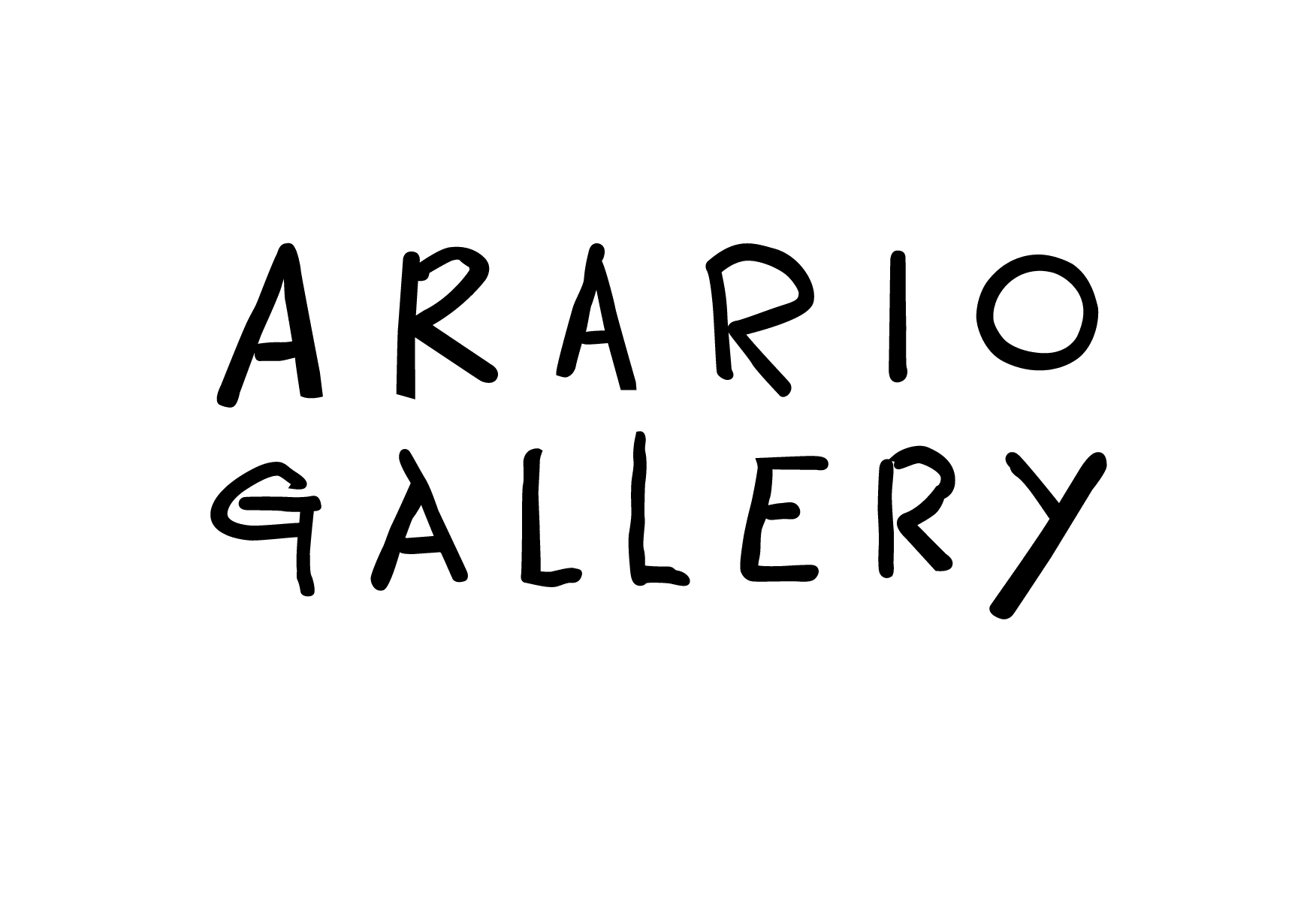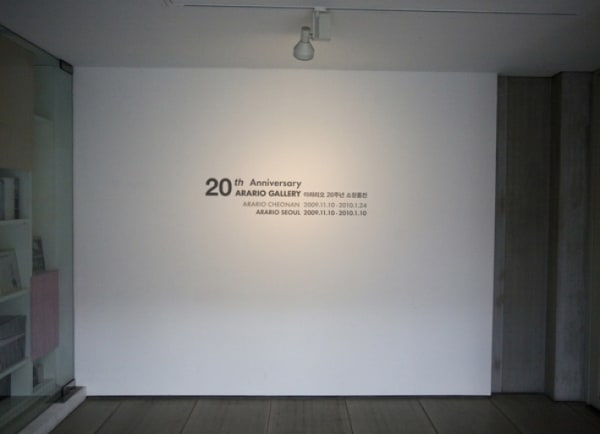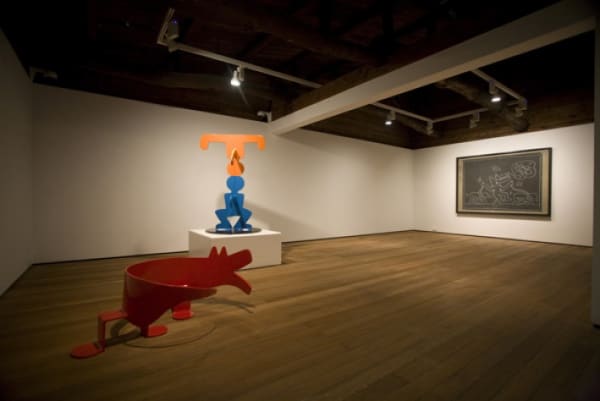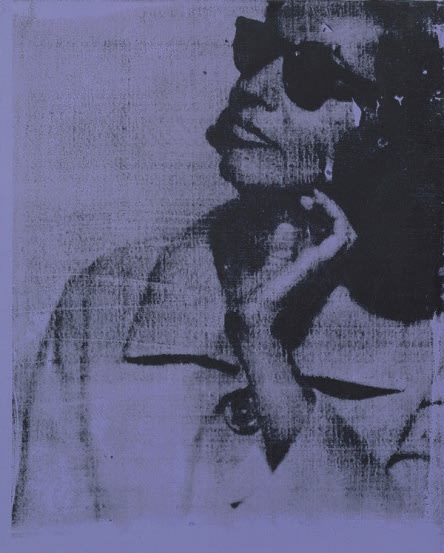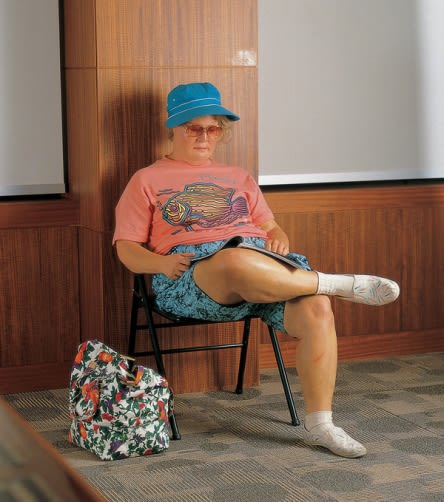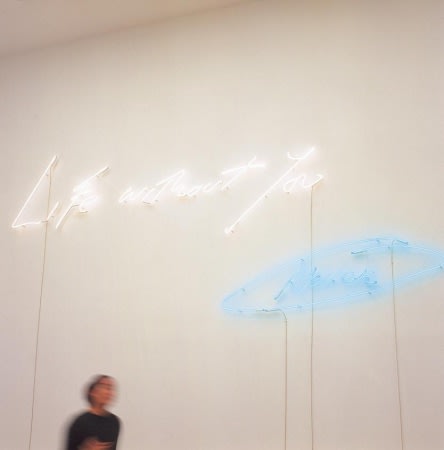Arario's Finest: Celebrating 20 years of Arario Gallery
Arario Gallery celebrates its 20th year anniversary since its inauguration in 1989. The upcoming exhibition will show works of artists that have worked with Arario during the past 20 years, as well as our private collections never revealed to the public before. Included in the show are Marc Quinn’s Self (2001), Neo Rauch’s large oil paintings, and Sigmar Polke’s The Fastest Gun in the West (2002), all of which are some of Mr. Ci Kim’s beloved pieces. Mr. Kim is the owner of Arario Gallery, included in international art magazines such as Monopol of Germany, Art Review of London, and Art News of New York as one of the most powerful and influential figures in global art world, almost every year from 2004 to 2009 as the only Korean figure.
From 1989 to 2000, Ci Kim poured great energy into creating a sculpture park (Arario Small City) in the area around a bus terminal, a department store, and a movie theater which he runs in Cheonan, city located one hour from Seoul. To distinguish his business from all other terminals and department stores and to raise cultural awareness for the citizens, Kim allocated significant sculpture works of Damien Hirst, Wang Guangyi, Keith Haring, Isamu Noguchi, and Robert Indiana, just to name a few. In 2000, he took down the original building for the gallery and expanded the exhibition space to 32,024.7ft², making it one of the nation’s largest galleries. Kim successfully launched the new space with Keith Haring and Anselm Kiefer’s large scale exhibitions and continued to introduce yBa artists such as Damien Hirst, Mark Quinn, and Tracey Emin, as well as yGa artists such as Sigmar Polke and Neo Rauch through important group shows and . The gallery and the park together continue to cater to the needs of Korea’s art audiences with important local and international exhibitions, while promoting young and bourgeoning Korean artists to the world through three other Arario galleries located in Seoul, Beijing and New York.
Arario Gallery Seoul will show approximately 15 artworks including works by Neo Rauch, Andy Warhol, Tracey Emin, and Sigmar Polke. Arario Gallery Cheonan will show approximately 20 artworks including works by Marc Quinn, Damien Hirst, Markus Lupertz, Jitish Kallat, and Do- Ho Suh. Arario Gallery’s 20th Anniversary collections show will provide the audience with a wonderful opportunity to enjoy great masterpieces of this century, and to physically experience the passion that ran through and supported Arario Gallery to establish its global position in the art world today.
Marc Quinn, b. 1964, British
Marc Quinn received the attention of the British Art scene more than anyone else. When his Self was exhibited in Saatchi Gallery, he was called “the most notable young artist of London.” In 1991, Marc Quinn created his first Self and since then he proposed to make new version very five years until his death, using fresh blood and a new mould from his head. By casting his head with eight pints of his own blood, which is the average amount of blood in a human body, Quinn wants to capture the moment and the beauty of it. Technically, it relies on maintaining an extremely specific temperature and condition. If the electric cold of the refrigerator is pulled out, the work will disappear. The fragility of the work suggests the mortality of our life and the mutability of our body. You take my breath away (1992) explores the ability of the body to encompass different human states. This work, which is the latex casting of Quinn’s own body, gives the audience the illusion of the sloughed skin. It describes and incarnates the pain of St. Bartolommeo who was martyred by peeling off the skin.
Antony Gormley, b. 1950, British
Gormley introduces his body as the starting point for his work. He cast his body in various poses- however, rather than showing the cast of his body, he generalizes the individual body by showing the outside mass that has enveloped his body parts. In Reflection (2001), we cannot see the details of the face or the body of the artist, but can see the semi- abstract form of the outside mass that contains what is inside. With the inside hollowed out, it exists as a boundary between the body that is contained and what contains, and it can be understood as the attempt to visualize the ‘in-between’ of the inside and the outside. It is also an attempt to visualize the existence of the body by its absence, which is confirmed by the mass that envelops the hollowed out space where once the body was. The work has a window in between which makes the installation look like a reflection in a mirror, but it consists of two exactly same sculptures facing each other. Like so, Gormley’s work is not a complete work in itself, but rather the meaning is found in interaction with the space where the work is located.
Tracey Emin, b. 1963, British
Emin’s art is one of disclosure, using her life events in works ranging from storytelling, drawing, filmmaking, installation, painting, neon, photography, appliqued blankets and sculpture. Emin exposes herself, her hopes, humiliations, failures and successes in an incredibly direct manner. Often tragic and frequently humorous, it is as if by telling her story and weaving it into the fiction of her art she somehow transforms it. By using themes that one can easily encounter around us, such as female sexual life, sensibility, female’s unique experience, she visualizes women’s experiences, including hers, that are personal and yet cannot be verbally expressed and brings them to the arena of public opinion.
Sigmar Polke, b. 1941, German
Unlike other artists who represent a movement as avatars of a formal or conceptual ideology, Polke has resisted these narrow definitions through an aggressive and relentless pursuit of the possibilities of materials and ideas. Rather than following the trends of the moment, Polke acts as initiator and flaneur, defining and embracing the historical and current legacies of abstraction, Pop, Minimalism, Conceptualism and appropriation. The radical originality of Polke's painting is that their images and media, while seeming to be common to mass produced objects, are like open texts that constantly create new meanings and effects in their relationships with each new spectator and each new space and time.
Keith Haring, 1958-1990, British
Keith Haring, one of the most recognized artists of the 1980's continues to influence the art of today. Younger artists continue to adopt his methodology and use of graphic and cartoon-like imagery. Working within the urban environment, Haring utilizes the language and theater of graffiti, a practice that is at once a highly personalized development of visual and semantic style and its inscription directly on the urban surface.
Moving between the private and public realms and high art and popular culture, Haring's glyphs and symbols are repetitive and automatic gestures that communicate publicly as a language learned through graphic visual impact.
Neo Rauch, b.1960, German
Neo Rauch’s characteristic style of surrealist elements combined with Socialist Realism influenced the young generation of Leipzig painters and established a new trend in painting. One can describe Rauch’s work as 60’s graphics of Eastern European origin, enlarged to a monumental scale. At first glance, these pictorial forms seem like a stock- take of socialist propaganda painting. However, upon closer inspection a multi- layered fantasy world, which avoids a definitive interpretation, is revealed. Above all, it is the power of imagination that stands out, which Rauch uses to turn the obvious and obscure, nameable and unnamable into dissonant unities, which should be emphasized as an integral quality.
